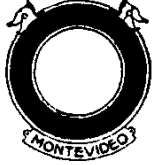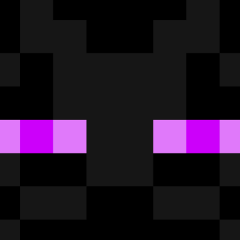-
Posts
1,007 -
Joined
-
Last visited
-
Days Won
4
Bowmore last won the day on March 25 2018
Bowmore had the most liked content!
About Bowmore
- Birthday 01/05/1955
Profile Information
-
Member Title
Coire Dearg
-
Location
Southampton UK
-
Interests
GIS Programming, Africa, Exploring the far north west of Scotland in search of beatiful wild Brown Trout. Islay whisky.
Recent Profile Visitors
Bowmore's Achievements
-
 mr-es335 reacted to a post in a topic:
Strip any characters from a string function
mr-es335 reacted to a post in a topic:
Strip any characters from a string function
-
 Dan_555 reacted to a post in a topic:
IsNumerical
Dan_555 reacted to a post in a topic:
IsNumerical
-
 ratus69 reacted to a post in a topic:
IsNumerical
ratus69 reacted to a post in a topic:
IsNumerical
-
 Tacomas reacted to a post in a topic:
[SOLVED] exact meaning of $MB_SYSTEMMODAL as in MsgBox
Tacomas reacted to a post in a topic:
[SOLVED] exact meaning of $MB_SYSTEMMODAL as in MsgBox
-
 jimmy123j reacted to a post in a topic:
Progress bar issue when embedded inside a status bar
jimmy123j reacted to a post in a topic:
Progress bar issue when embedded inside a status bar
-
 abberration reacted to a post in a topic:
Fast Array Write To Excel
abberration reacted to a post in a topic:
Fast Array Write To Excel
-
 RAMzor reacted to a post in a topic:
Resolution of the working area of the desktop
RAMzor reacted to a post in a topic:
Resolution of the working area of the desktop
-
 Zedna reacted to a post in a topic:
Is AutoIT perfect?
Zedna reacted to a post in a topic:
Is AutoIT perfect?
-
 argumentum reacted to a post in a topic:
Au3Check bug ?
argumentum reacted to a post in a topic:
Au3Check bug ?
-
 beautifulsoup reacted to a post in a topic:
Array delete blank element
beautifulsoup reacted to a post in a topic:
Array delete blank element
-

Creating a list of all includes used by a script.
Bowmore replied to Bowmore's topic in AutoIt General Help and Support
Zedna Thanks for that suggestion I had not thought of doing that. It's probably a simpler for me to include a zip of the installer with my code archive. Thanks -

Creating a list of all includes used by a script.
Bowmore replied to Bowmore's topic in AutoIt General Help and Support
Thanks RTFC CodeScanner is perfect for my needs, better than I was hoping for. -
I've got a lot of AutoIt applications that I've written for work and I'm wanting to package the source for each of them in a zip file including all the includes and any dlls etc. The reason I want to do this is to enable minor tweaks to be quickly made to the applications in the future without having to worry about it not building due to some significant upgrade to one or more of the includes. Before I start writing myself a script to do this I would just like to check if anyone knows of script that will recursively parse all the included in the main au3 file and produce a list of all include files the application is dependent on.
-

Access Global Variable inside a Function
Bowmore replied to MK_2019's topic in AutoIt General Help and Support
;~.......... <File2.au3> .......... Local $cell = 1 Local $Description ="TTT3" Local $var = "C:\AutoIT_Excel_Report\Book3.xlsx" Local $oExcel = _Excel_Open (True) Local $oWorkbook = _Excel_BookOpen ($oExcel, $var) These variables you have declared in File2.au3 as Local are in fact Global. AutoIt treats all variable declared outside a function as Global. There is no file scoping in AutoIt like some other languages. -
This is not a bug in au3check. The variable $rc in you function is initialised but never read/used, hence the warning. In your test function $rc is completely redundant. #AutoIt3Wrapper_Au3Check_Parameters=-d -w 1 -w 2 -w 3 -w 4 -w 5 -w 6 -w 7 Func _test() Local $rc = 1 ? Beep() : "" EndFunc ;==>_test _test()
-
I downloaded your script in your first post and compiled it unaltered then executed it from a command prompt as Monitors>P:\Downloads\EPP_NF_Replacer_UBI.exe /ExtractSourceCode This created a file P:\Downloads\EPP_NF_Replacer_UBI.exe.txt Which contains the the original source code from P:\Downloads\EPP_NF_Replacer_UBI.au3 From this I can see only 2 possibilities why this is not working for you You are mistyping the command-line parameter "/ExtractSourceCode" Your anti-virus is seeing this as suspicious behaviour and deleting the extracted file.
-
This line is invalid. You can't use macros or variables as the source value in FileInstall. You must use literal paths and file names. FileInstall(@ScriptFullPath, @ScriptDir & "\" & @ScriptName & ".txt", 1) It needs to be something like this FileInstall("C:\dir1\dir2\myscript.au3", @ScriptDir & "\" & @ScriptName & ".txt", 1) Or FileInstall(".\myscript.au3", @ScriptDir & "\" & @ScriptName & ".txt", 1)
-
 Bowmore reacted to a post in a topic:
Multiple arrays vs multidimensional array
Bowmore reacted to a post in a topic:
Multiple arrays vs multidimensional array
-
 Bowmore reacted to a post in a topic:
Floating-point rounding methods
Bowmore reacted to a post in a topic:
Floating-point rounding methods
-

WinWait- doesn't open the file - (Moved)
Bowmore replied to malka's topic in AutoIt General Help and Support
This value "WindowsForms10.BUTTON.app.0.2bf8098_r13_ad11" will probably change every time the application is run. Determine which part changes and then use REGEXPCLASS to work with the part that does not change. -
 Bowmore reacted to a post in a topic:
Formatting phone numbers with regex
Bowmore reacted to a post in a topic:
Formatting phone numbers with regex
-

Formatting phone numbers with regex
Bowmore replied to tecc's topic in AutoIt General Help and Support
Hi tecc My mistake, I was not looking at the output closely enough. Are you sure the last number +49 2345 55555 is correct the last group only has 5 numbers. No matter I have amended my regular expression to allow 5 or 6 numbers in the last group. Local $sFormatted = '' Local $aPhoneNumbers[11] $aPhoneNumbers[0] = "+49 (0) 1234 567890" $aPhoneNumbers[1] = "+49 1234 567890" $aPhoneNumbers[2] = "01234 567890" $aPhoneNumbers[3] = "01234567890" $aPhoneNumbers[4] = "+34 (0) 1234 567890" $aPhoneNumbers[5] = "+34 1234 567890" $aPhoneNumbers[6] = "+41 1234 567890" $aPhoneNumbers[7] = "+411234567890" $aPhoneNumbers[8] = "+41 1234567890" $aPhoneNumbers[9] = "+49 1234 567890" $aPhoneNumbers[10] = "+49 2345 55555" For $i = 0 To 10 $sFormatted = StringRegExpReplace(StringRegExpReplace($aPhoneNumbers[$i],'^(?:\+(\d{2}) ?(?:\(0\))? ?|(0))(\d{4}) ?(\d{5,6})$','00\1\2\3\4'),'^(?:0049|000)(\d+)$','0\1') ConsoleWrite('@@ Debug(' & @ScriptLineNumber & ') : $sFormatted = ' & $sFormatted & @CRLF & '>Error code: ' & @error & @CRLF) ;### Debug Console next -

Formatting phone numbers with regex
Bowmore replied to tecc's topic in AutoIt General Help and Support
Slightly modified version to output without spaces Local $sFormatted = '' Local $aPhoneNumbers[6] $aPhoneNumbers[0] = "+49 (0) 1234 567890" $aPhoneNumbers[1] = "+49 1234 567890" $aPhoneNumbers[2] = "01234 567890" $aPhoneNumbers[3] = "+34 (0) 1234 567890" $aPhoneNumbers[4] = "+41 1234 567890" $aPhoneNumbers[5] = "+34 1234 567890" For $i = 0 To 5 $sFormatted = StringRegExpReplace(StringRegExpReplace($aPhoneNumbers[$i],'^\+([^4][^9]|[0-9]{2})[ 0)(]*([0-9]{4}) ?([0-9]{6})$','00\1\2\3'),'^(?:0049[0-9]|(0[^0])) ?([0-9]{3}) ?([0-9]{6})$','0\1\2\3') ConsoleWrite('@@ Debug(' & @ScriptLineNumber & ') : $sFormatted = ' & $sFormatted & @CRLF & '>Error code: ' & @error & @CRLF) ;### Debug Console next -

Formatting phone numbers with regex
Bowmore replied to tecc's topic in AutoIt General Help and Support
This works for all your examples. It's probably possible to come up with something more elegant, but it does the job Local $sFormatted = '' Local $aPhoneNumbers[5] $aPhoneNumbers[0] = "+49 (0) 1234 567890" $aPhoneNumbers[1] = "+49 1234 567890" $aPhoneNumbers[2] = "01234 567890" $aPhoneNumbers[3] = "+34 (0) 1234 567890" $aPhoneNumbers[4] = "+41 1234 567890" For $i = 0 To 4 $sFormatted = StringRegExpReplace(StringRegExpReplace($aPhoneNumbers[$i],'^\+([^4][^9]|[0-9]{2})[ 0)(]*([0-9]{4}) ?([0-9]{6})$','00\1 \2 \3'),'^0049 (.*)$','0\1') ConsoleWrite('@@ Debug(' & @ScriptLineNumber & ') : $sFormatted = ' & $sFormatted & @CRLF & '>Error code: ' & @error & @CRLF) ;### Debug Console next -

Sending Edit Box data to Notepad slow
Bowmore replied to Fractured's topic in AutoIt GUI Help and Support
ContolSetText is another quick option Func _OutFile() $TempEdit = GUICtrlRead($Edit1) $OutEdit = StringReplace($TempEdit, @LF, "") Run("notepad.exe") WinWaitActive("Untitled - Notepad") Sleep(1000) ControlSetText("Untitled - Notepad", "", "Edit1", $OutEdit) EndFunc -

I have to ControlClick 100-200x to click into BlueStacks
Bowmore replied to jplumb's topic in AutoIt General Help and Support
With ControlClick() the coords specify the position to click relative to the top left of the control, -

Where is the Y position for _WinAPI_TextOut
Bowmore replied to AndyS19's topic in AutoIt GUI Help and Support
As with all these types of questions the answer is to try it and see where the text is placed. From MSDN PHYSICALOFFSETY For printing devices: the distance from the top edge of the physical page to the top edge of the printable area, in device units. For example, a printer set to print at 600 dpi on 8.5-by-11-inch paper, that cannot print on the topmost 0.5-inch of paper, has a vertical physical offset of 300 device units.- 1 reply
-
- _winapi_textout
- printing
-
(and 1 more)
Tagged with:









